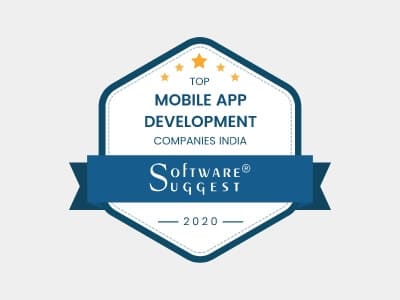Migrating your Python code to a newer version can be both exciting and daunting. Embracing new features and performance improvements is appealing, but compatibility issues can lead to unexpected errors and downtime. Fear not! This guide will equip you with the knowledge and tools needed to execute a seamless Python migration, ensuring you take full advantage of the improvements offered by the latest version while keeping your web application stable.
Understanding the Python Migration Landscape
Before starting the migration, it’s essential to understand the changes between your current and target Python versions. A little research upfront can save a lot of trouble later on.
- What’s New in the Target Version
Start by understanding the official “What’s New” documentation for the Python version you’re migrating to. Familiarize yourself with enhancements, new features, and any changes that could potentially break your code. For example, Python 3.8 introduced new syntax features and optimizations, which may require adjustments in your existing code. - Removed Features and Modules
Check the list of features and modules that have been completely removed. If your application relies on any of these, plan to refactor the code. A thorough check ensures that your code won’t break when you switch to the newer version. - Deprecation Warnings
Features marked as deprecated in your current Python version might still work, but they are scheduled for removal in future versions. Ignoring these warnings can lead to serious issues down the line. Address these deprecations during the migration to future-proof your code. - Behavior Changes
Subtle behavior changes between versions, even if not explicitly flagged as incompatible, can impact your code. Review release notes to understand these changes, and identify any portions of your code that may be affected.
Analyzing Code and Identifying Issues
To prevent issues during migration, perform an in-depth analysis of your codebase to identify any potential compatibility issues. There are both automated and manual approaches to this task.
Static Code Analysis
Use tools like pylint, flake8, or your preferred IDE linters to catch deprecated features and syntax incompatibilities. Configure these tools to check your code against the target Python version. For example:
flake8 --select=D,E,F,W --target-version=python3.9 .
This command analyzes your code for compatibility with Python 3.9 standards.
Deprecation Warnings with Runtime Checks
Enable all deprecation warnings by running your code with the -W flag:
python -W all my_script.py
This practice helps you capture warnings about deprecated features. For example, the print statement syntax changed from Python 2 to Python 3:
Python 2 Code Example:
print "Hello, World!"
Python 3 Code Example:
print("Hello, World!")Code Linting for Best Practices
Use additional tools like black (for formatting) and isort (for sorting imports) to ensure that your code follows best practices. This will also help identify any code style issues that may lead to incompatibilities.
The Importance of Testing
Testing is critical to ensure that your migration is successful. Comprehensive testing helps catch issues early and reduces the risk of downtime or errors.
Unit Testing
If you already have a suite of unit tests, run them using the target Python version. Unit tests isolate components of your code and will help you identify any areas that break during migration.
pytest --maxfail=3 --target-version=python3.9 tests/
Running your tests in the new environment will quickly point out any broken functionality.
Integration Testing
Integration tests ensure that different components of your application work together seamlessly. This includes interactions with external systems, databases, or third-party libraries. Perform integration testing to verify that your application continues to function correctly after migration.
Manual Testing and User Acceptance Testing (UAT)
Engage testers to manually verify critical functionalities, especially those not covered by automated tests. While automated testing is crucial, manual testing provides an extra layer of validation.
Continuous Integration for Consistency
Setting up a CI/CD pipeline to run your tests automatically on both the current and target Python versions provides confidence that your migration is progressing smoothly without introducing regressions.
Formulating a Migration Strategy
An effective migration strategy is essential to minimize risks and maximize efficiency. Consider these approaches:
Gradual Migration
If you have a large codebase, consider migrating in smaller steps rather than all at once. Start with the low-risk parts of your application to gain experience with the process. A gradual migration allows for easier troubleshooting and more manageable testing.
Using Virtual Environments
Isolate your code using virtual environments to test compatibility with different Python versions. Virtual environments (venv or conda) make it easy to manage dependencies and ensure your migration doesn’t affect other projects.
python3.9 -m venv migration_env
source migration_env/bin/activate
This sets up a Python 3.9 environment to safely test your migration.
Automating Code Modernization
Use tools like 2to3 or futurize to convert Python 2 code to Python 3. These tools automate many syntax changes, allowing you to focus on testing and fixing more complex issues.
2to3 -w my_script.py
The above command will refactor my_script.py to be Python 3-compatible.
Common Pitfalls in Python Migration
Migration can present challenges. Being aware of common pitfalls can save time and effort
Syntax and Keyword Changes
Python sometimes introduces changes to syntax or reserved keywords. While static analysis tools catch many of these issues, you might still encounter some during manual or automated testing.
Removed Modules or Features
Some modules or features may no longer exist in newer versions. Identify and refactor any code that relies on these elements. For example, the urllib2 module has been removed in Python 3.
Python 2 Code Using urllib2:
import urllib2
response = urllib2.urlopen('https://www.example.com')
html = response.read()
Python 3 Code Using urllib.request:
import urllib.request
response = urllib.request.urlopen('https://www.example.com')
html = response.read().decode('utf-8')
Third-Party Library Compatibility
Ensure all third-party libraries are compatible with the new Python version. Check the official documentation or PyPI page of each library, and update or replace any that are incompatible.
pip install --upgrade -r requirements.txt
Performance Implications
Newer Python versions often come with performance improvements. Take this opportunity to run performance benchmarks on your code and confirm that any changes positively impact your application.
A Smooth Transition to the Future
Python version migration doesn’t have to be a daunting task. By thoroughly understanding the differences between versions, analyzing your codebase, testing rigorously, and planning a strategic migration approach, you can ensure a smooth upgrade. Your applications will benefit from the latest Python enhancements without sacrificing stability or performance.
If you’re looking for expert support to guide you through your Python migration journey, our team is here to help. We have the expertise to make your migration seamless, ensuring that your code is updated efficiently and effectively.
Conclusion: Migrating with Confidence
Python migration, when done right, allows you to unlock the potential of modern Python features and optimizations. Whether it’s a small script or a large enterprise application, careful planning, code analysis, comprehensive testing, and a step-by-step migration strategy are key to a successful transition.
Social Hashtags
#Python #PythonMigration #PythonUpgrades #PythonProgramming #CodingGuide #SoftwareDevelopment #ProgrammingLanguages #PythonTips
Upgrade your systems efficiently! Contact us for expert Python migration and upgradation services.
Upgrade NowTestimonials: Hear It Straight From Our Global Clients
Our development processes delivers dynamic solutions to tackle business challenges, optimize costs, and drive digital transformation. Expert-backed solutions enhance client retention and online presence, with proven success stories highlighting real-world problem-solving through innovative applications. Our esteemed Worldwide clients just experienced it.
Awards and Recognitions
While delighted clients are our greatest motivation, industry recognition holds significant value. WeblineIndia has consistently led in technology, with awards and accolades reaffirming our excellence.

OA500 Global Outsourcing Firms 2025, by Outsource Accelerator

Top Software Development Company, by GoodFirms

BEST FINTECH PRODUCT SOLUTION COMPANY - 2022, by GESIA

Awarded as - TOP APP DEVELOPMENT COMPANY IN INDIA of the YEAR 2020, by SoftwareSuggest